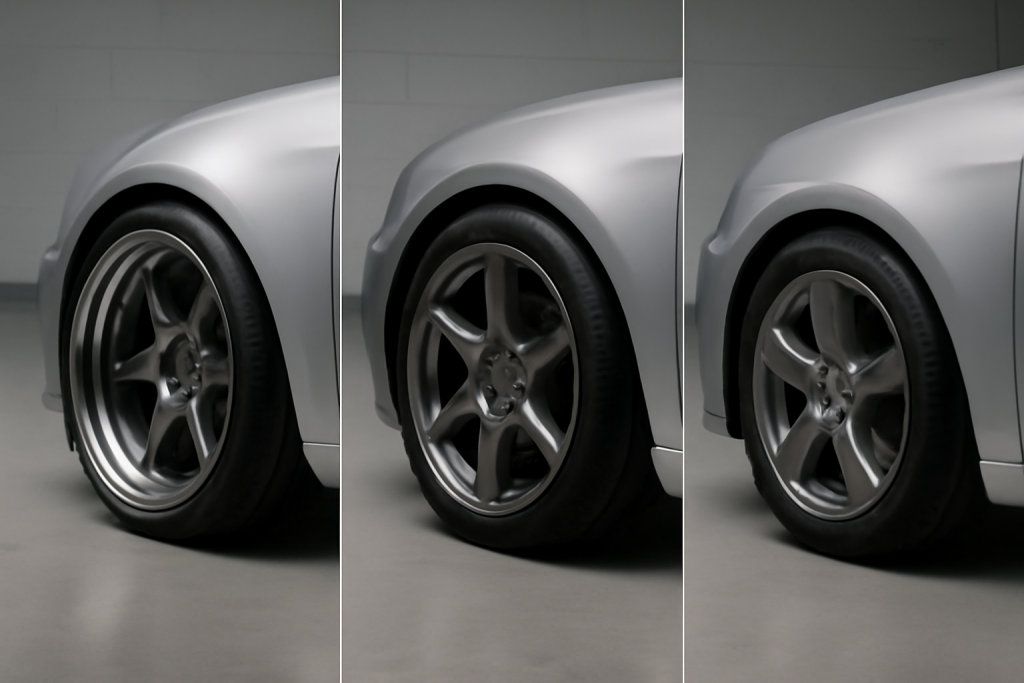
Custom wheels and tires can transform a vehicle’s appearance and handling — but only if the wheel offset and backspacing are correct. In this guide, we explain wheel offset and backspacing in detail, including how to measure them, why they matter, and the risks of incorrect fitment.
Wheel offset describes the distance between the hub mounting surface and the centerline of the wheel. This determines how the wheel sits inside the wheel well and affects clearance, handling, and safety.
| Offset Type | Mounting Surface Position | Appearance in Wheel Well |
| Zero Offset | Aligns with the centerline | Neutral fit |
| Positive Offset | Toward the street side | Wheels sit further inside |
| Negative Offset | Toward the suspension side | Wheels protrude outward |
While offset refers to the hub-to-centerline distance, backspacing measures the distance from the hub mounting surface to the inner edge of the wheel. This determines how much space remains between the back of the wheel and suspension components.
Backspacing is particularly important when upgrading to wider wheels or tires. Too much backspacing can cause the inner edge of the wheel or tire to rub against suspension parts, brake calipers, or the inner fender.
Incorrect wheel offset can cause serious issues for vehicle performance and safety. Below are the most common problems for excessive positive or negative offset:

When selecting aftermarket wheels, it is critical to match the offset within ±5mm of the original equipment specifications if possible. Here’s a step-by-step guide:
Proper offset is not only about fitting the wheel in the well. It also impacts the vehicle’s dynamics:
Selecting wheels with the correct offset and backspacing is essential for ensuring safe, efficient, and visually appealing wheel fitment. It maintains clearance, preserves handling characteristics, and prevents costly damage to the vehicle. Always prioritize accurate measurement and professional advice when customizing your vehicle’s wheels and tires. Learn more about offsets and know your vehicle at KGCAR.PH.
Since 2012, KG Car PH has been the go-to for affordable car parts in the Philippines. We make it easy to find the right fit and offer same-day delivery nationwide—so you get quality parts fast, without spending more.
SOCIAL MEDIA
TOP CATEGORIES
QUICK LINKS
HELP
support@kgcar.ph
© 2025 KGCAR.PH